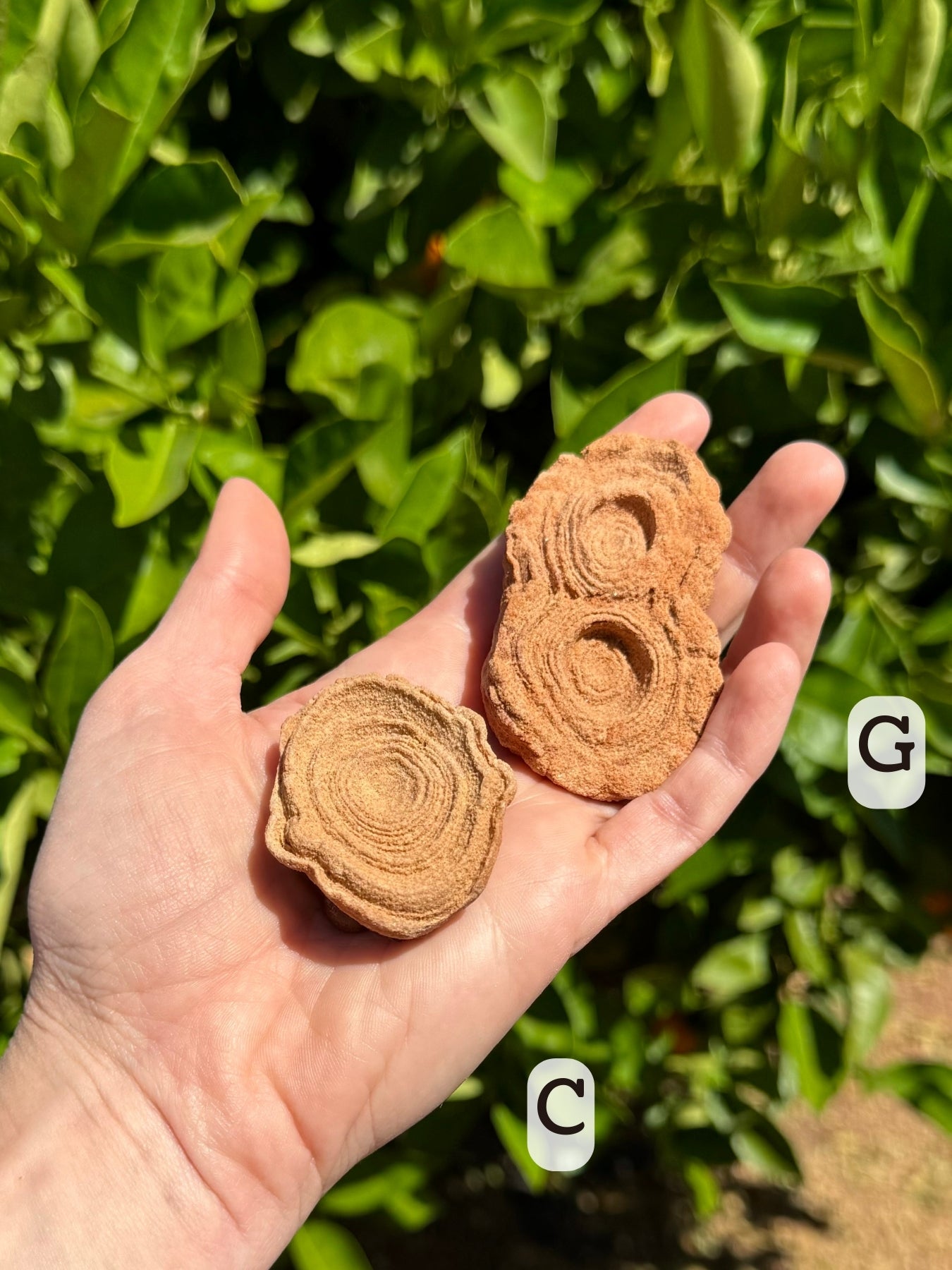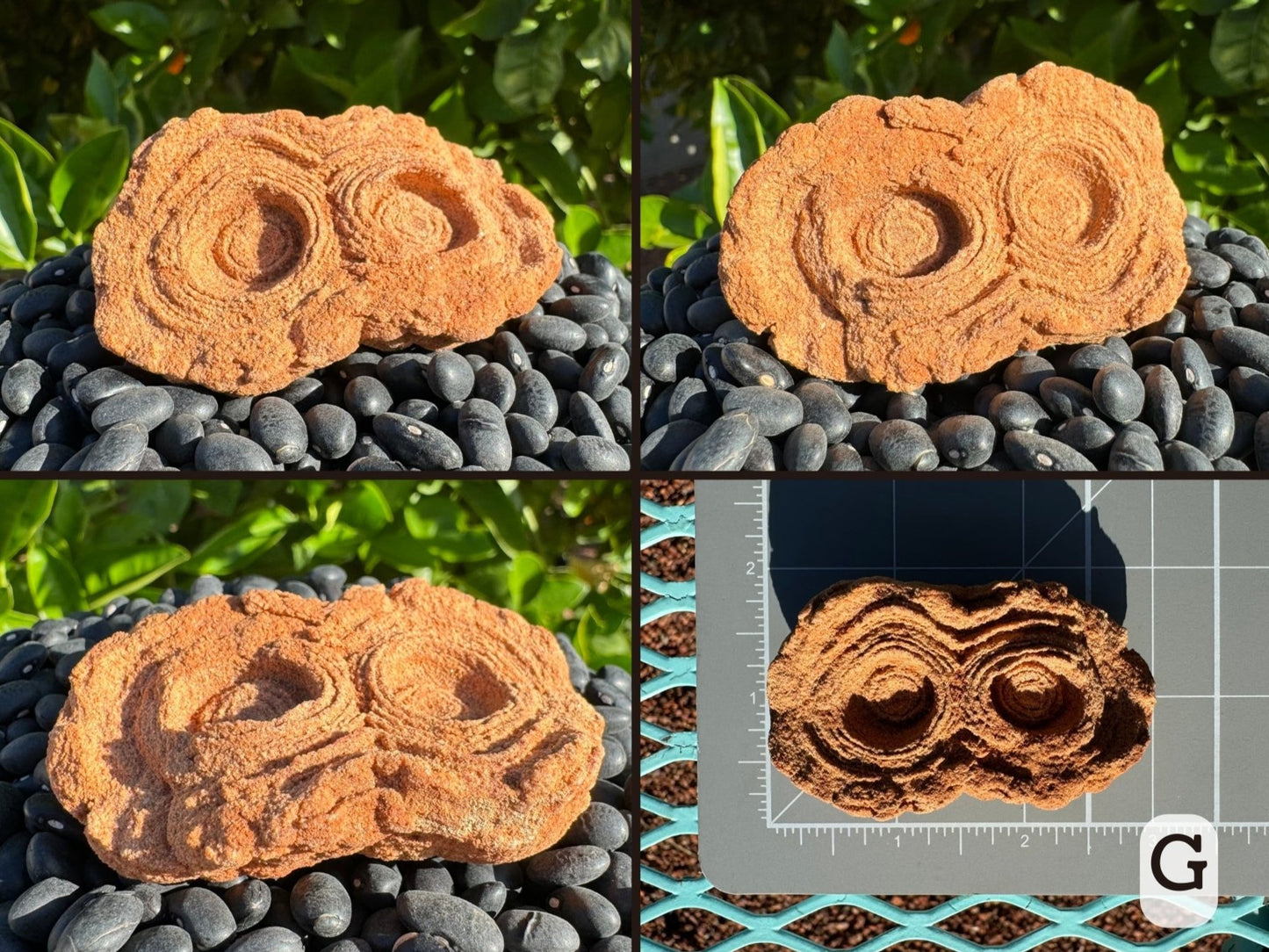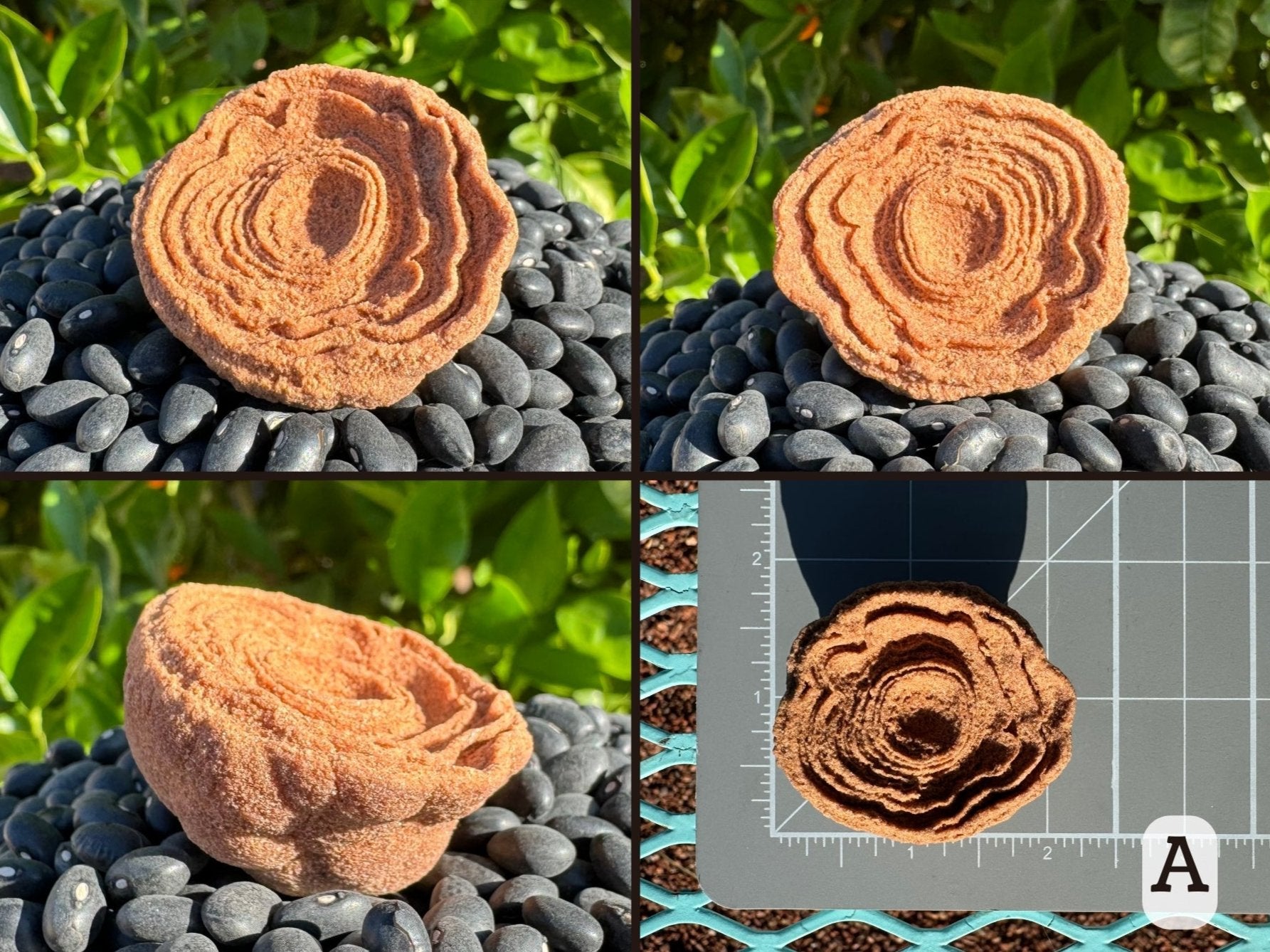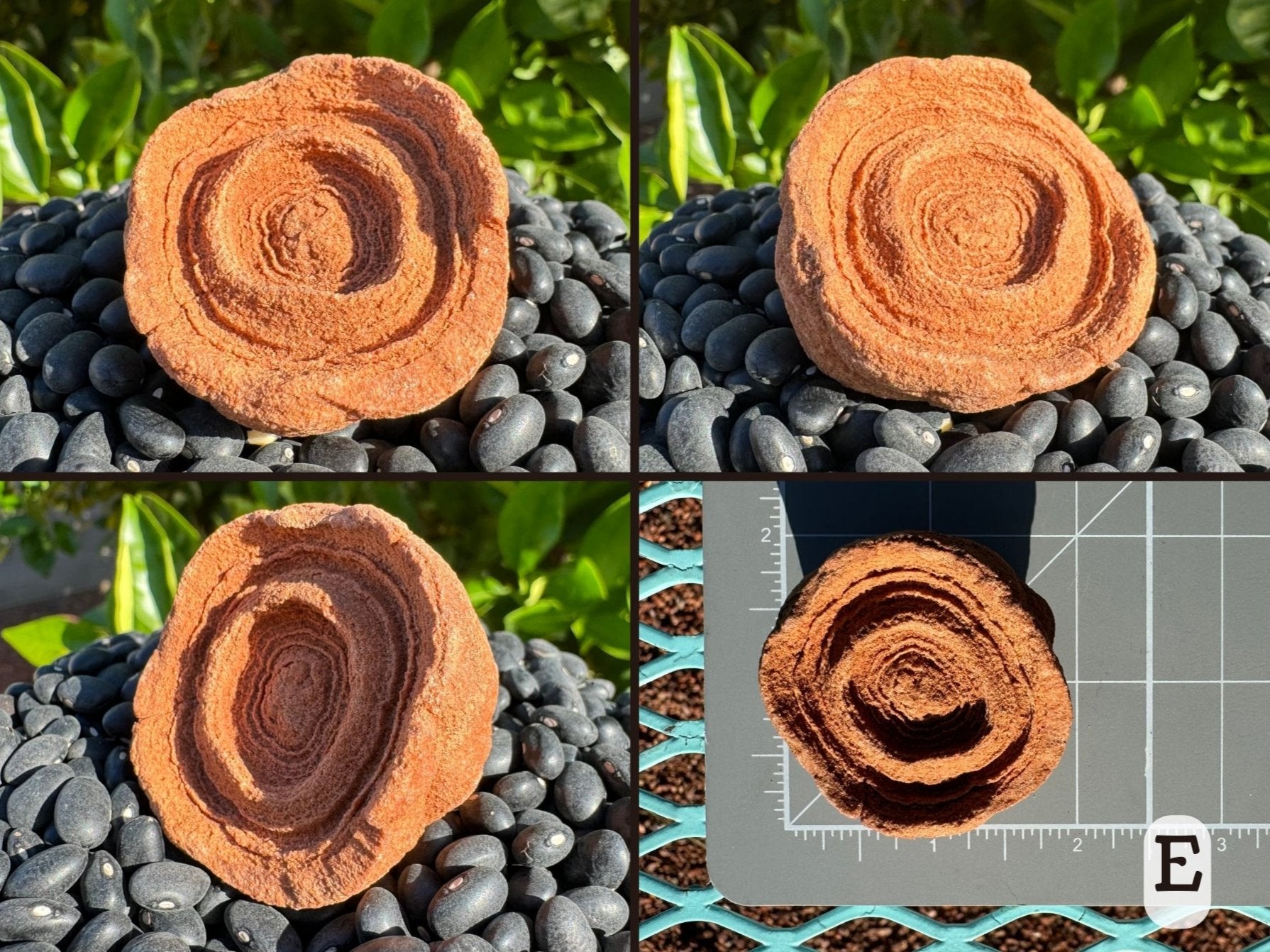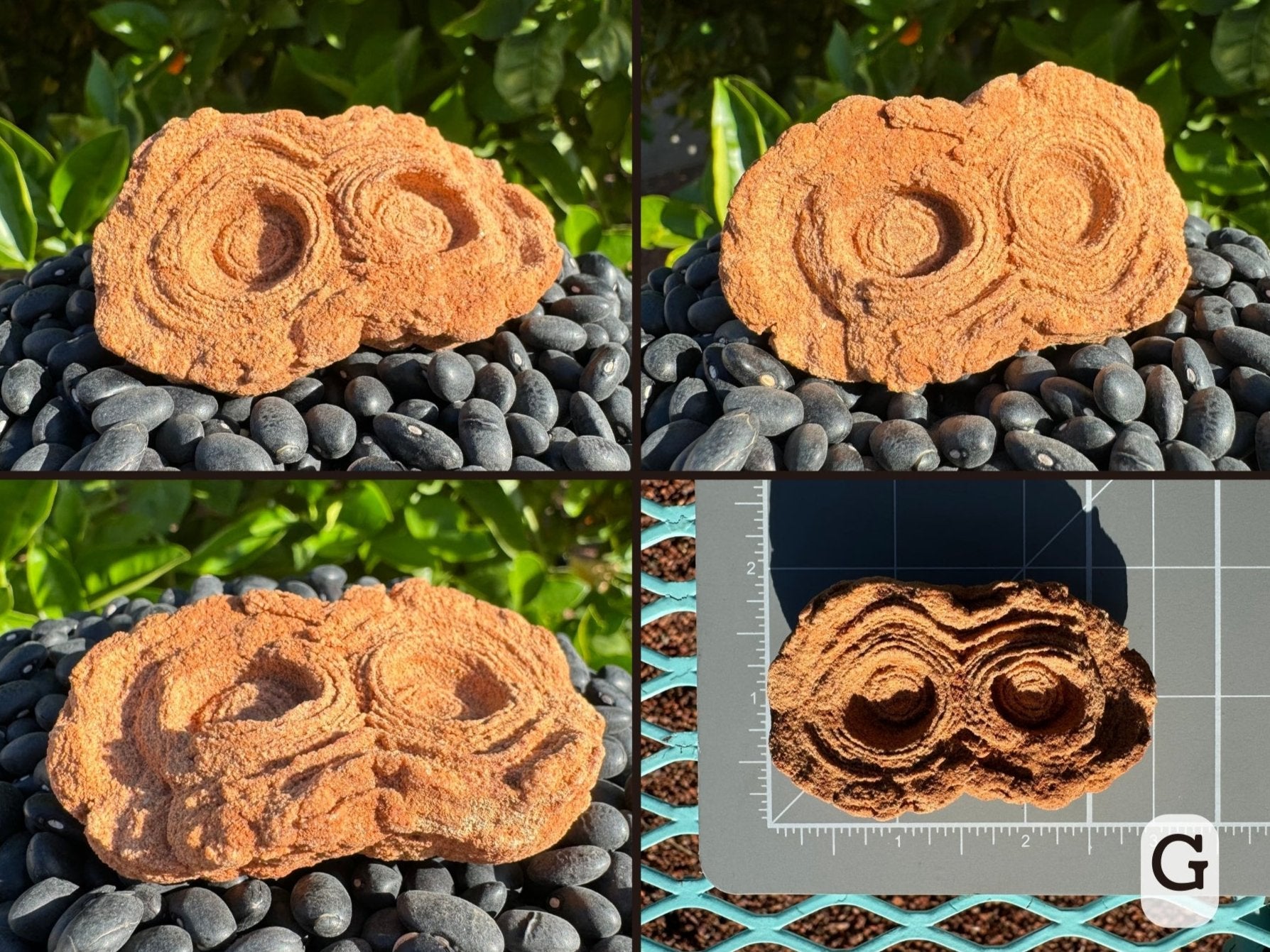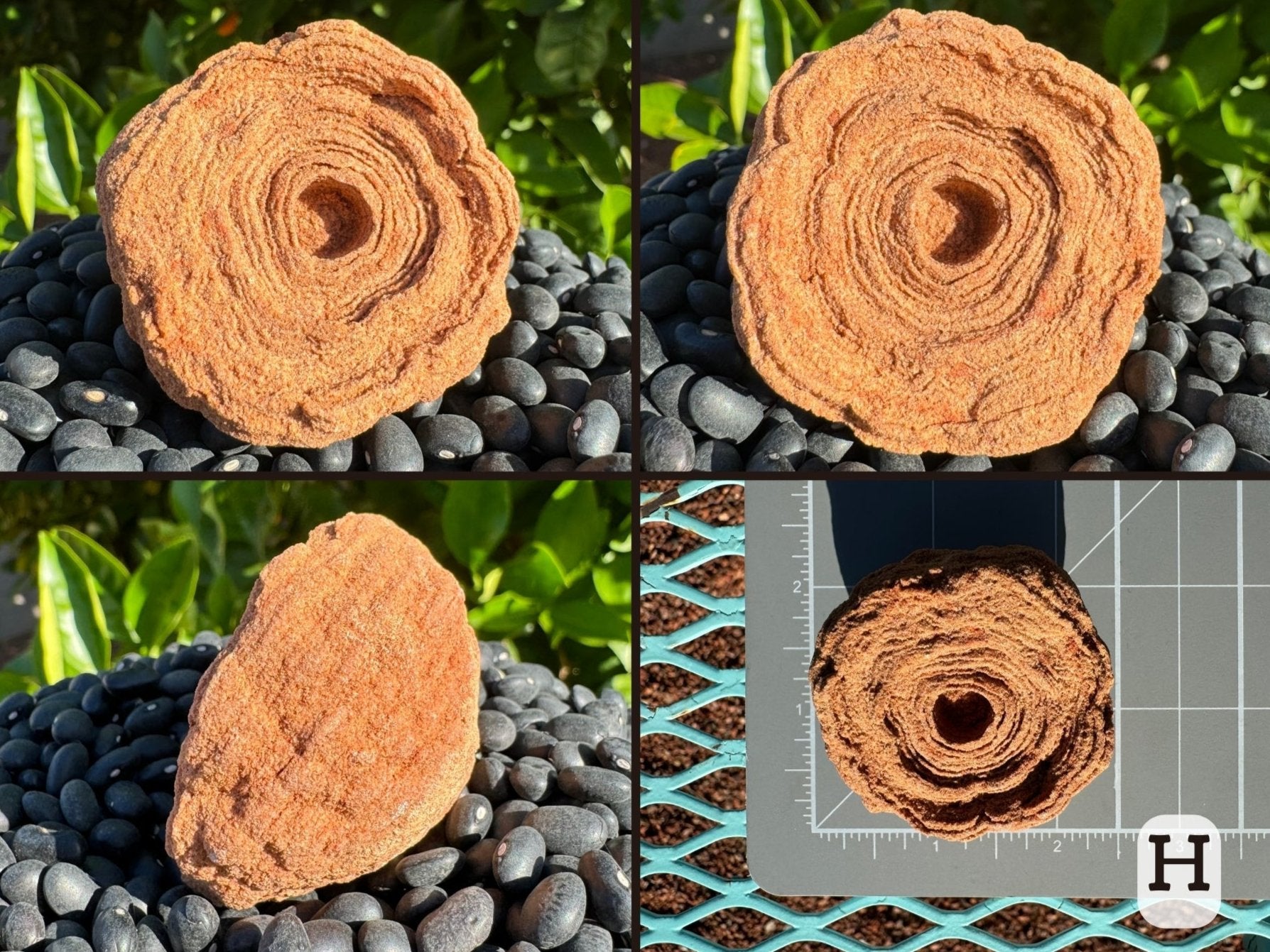Pseudo-stromatolites (small)
Pseudo-stromatolites (small)
Couldn't load pickup availability
A stromatolite is a sedimentary fossil structure made by prehistoric bacteria colonies, typically cyanobacteria. Stromatolites in fact are still living and forming in some parts of our world today, including Australia, and are among the earliest forms of life—and fossils—on our Earth.
The fossils form in shallow water conditions of lakes or salt water shores. First, cyanobacteria grow in microbial mats. Minerals like calcium carbonate precipitate (crystalize from the water) onto the surface of the mat. The bacteria acts as a glue, cementing it all together with sedimentary debris. Layers build up over time like a bacterial pearl; the name “stromatolite” appropriately means “layered rock” in Greek.
These, however, are not stromatolites. They are commonly believed to be stromatolites, and you will more often than not see them sold under that name and description. More accurately, they are concretions formed out of beautiful tones of red sandstone material. These sandstone concretions form in a manner similar to stromatolites, but minus the aid of bacteria: mineral-rich waters precipitate barite which binds with sand to form concentric layers around a nucleus. It is a relative of the barite desert rose, which grows clusters of round blade-like ‘petals.’
Option N gets the ugly duckling discount because the concentric banding isn't as well-formed as the rest.
UV reactivity Many pseudo-stromatolites from Morocco have faint to moderate whitish fluorescence under 365 nm UV light. They also show faint to moderate phosphorescence under the same wavelength. Some specimens may have patches that fluoresce orange, but those areas will not phosphoresce.



